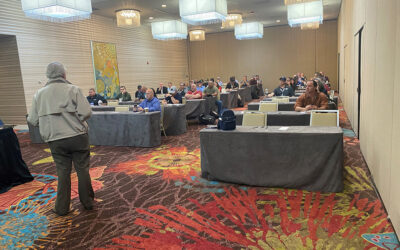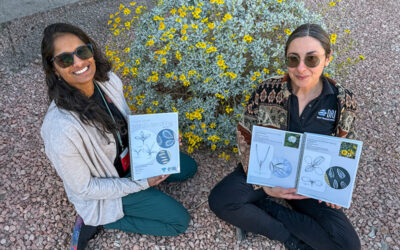DRI is a non-profit, which means that we rely on financial support from donors to make our projects possible. Thanks to individual contributions from community members, seed grants were awarded to eight teams of DRI researchers last year through the Innovation Research Program (IRP), which provides the resources DRI scientists need to pursue groundbreaking new projects.
With those funds, DRI scientists have begun to explore big environmental questions. Has microplastic pollution made its way to the famous blue waters of Lake Tahoe? What can tools used to understand groundwater tell us about how chemo reaches tumors? How is declining snowpack changing mountain environments and economies?
Developing new tools to study and predict dust emissions
Vic Etyemezian, George Nikolich, Markus Berli, Rose Shillito
With concerns about drought and desertification on the rise, it’s critically important to understand how and when dust forms, particularly in the Southwestern U.S. where dust emissions can directly impact water resources, human health, and public safety.
Vic Etyemezian, Ph.D., and his team are developing new tools to help scientists better understand what causes small soil aggregates to break up into dust particles and be emitted into the atmosphere under windy conditions. With these insights, the research team hopes that scientists will be able to better predict dust emissions and their impact on our environment and communities.
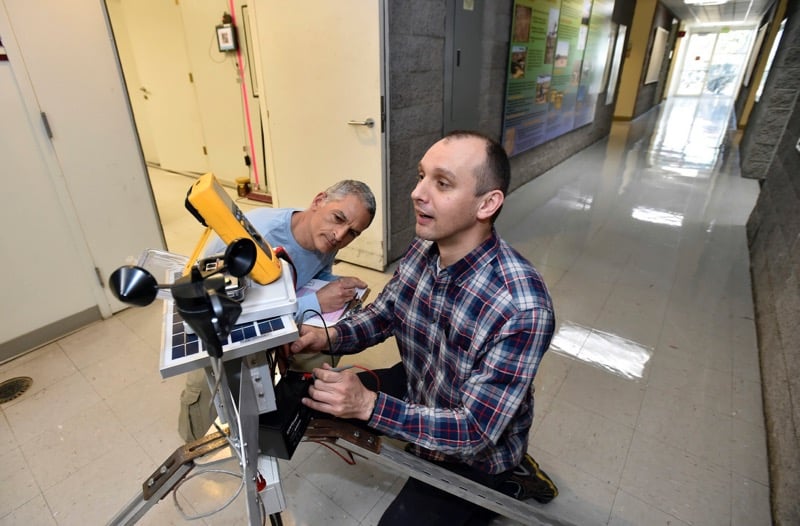
Vic Etyemezian and George Nikolich work on an instrument at DRI’s Las Vegas Campus. 2018. Credit: David Becker/Nevada Momentum.
Developing techniques to analyze human health impacts of air pollutants
Vera Samburova, Andrey Khlystov, Yeongkwon Son
Atmospheric scientists at DRI are world-leaders in analyzing air pollutants from sources like vehicle emissions and electronic cigarettes; however, they don’t yet have the tools to determine how exposure to those pollutants impacts human health.
DRI scientists led by Vera Samburova, Ph.D., are developing a technique for real-time analysis of human breath, which contains information that can shine a light on a person’s overall health and exposure to air pollutants. This breath analysis technique will allow for easy, noninvasive sampling from study participants and help DRI scientists determine a link between air pollutants and potential health impacts.
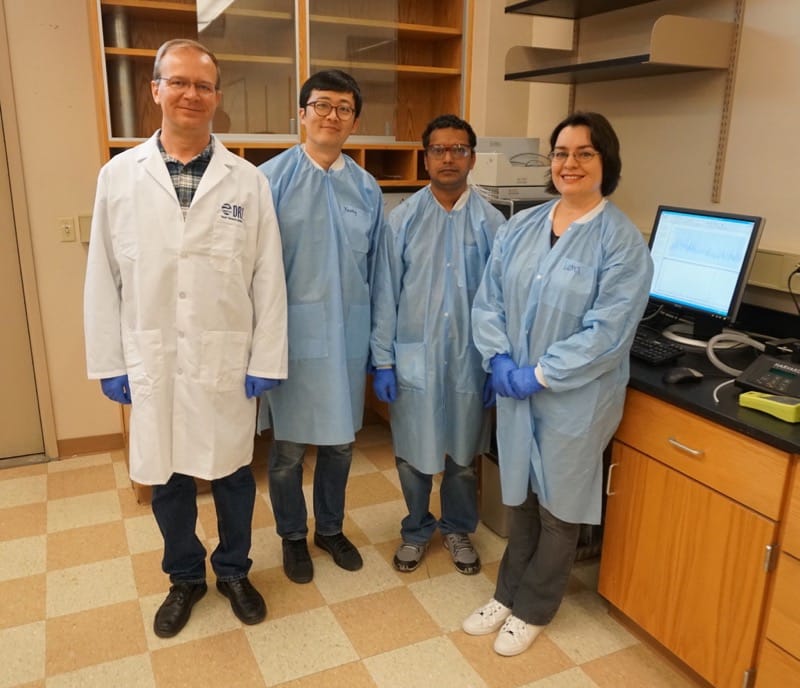
(From left) Andrey Khlystov, Yeongkwon Son, Chiranjivi Bhattarai, and Vera Samburova in the lab at DRI’s Reno Campus.
Tracking snow droughts in the Western US to improve water resource management
Dan McEvoy, Ben Hatchett, Justin Chambers
With a warming climate and increasingly variable precipitation, mountain snowpack in the Western United States is declining, which dramatically impacts the water resources available to communities downstream. Understanding how changes in snowpack are happening in real-time is critical to management decisions about water use and to our understandings of natural ecosystems.
Dan McEvoy, Ph.D., and his team are developing tools to track and monitor snow droughts—periods when more precipitation falls as rain instead of snow and snowpack is below average. These new, snow-drought specific tools will help inform scientists, resource managers, and federal agencies as they assess drought conditions and distribute federal aid to farmers and others impacted by drought.
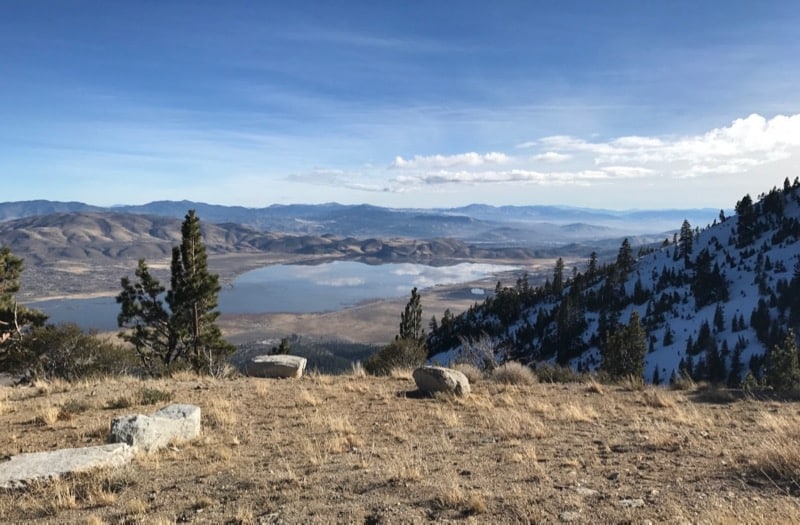
View of Washoe Lake from Mount Rose Ski Area, January 2018. Credit: Dan McEvoy
Examining connections between fire and groundwater to enhance wildfire prediction
Hai Pham, Markus Berli
As wildfires across the Western U.S. become larger, longer, and more frequent, understanding the conditions that increase fire risk is essential to protect our communities. While there’s certainly a connection between moisture in a landscape and the likelihood of fire, little is known about the interplay between wildfire and groundwater resources.
Hai Pham, Ph.D., and Markus Berli, Ph.D., are using groundwater and fire data from across the United States to explore connections between the two, namely how groundwater levels may be affected by wildfire activity and how fire may impact the amount of water that infiltrates the soil and replenishes groundwater supplies. Identifying these relationships will play a critical role in enhancing both fire predictions and groundwater resource management.
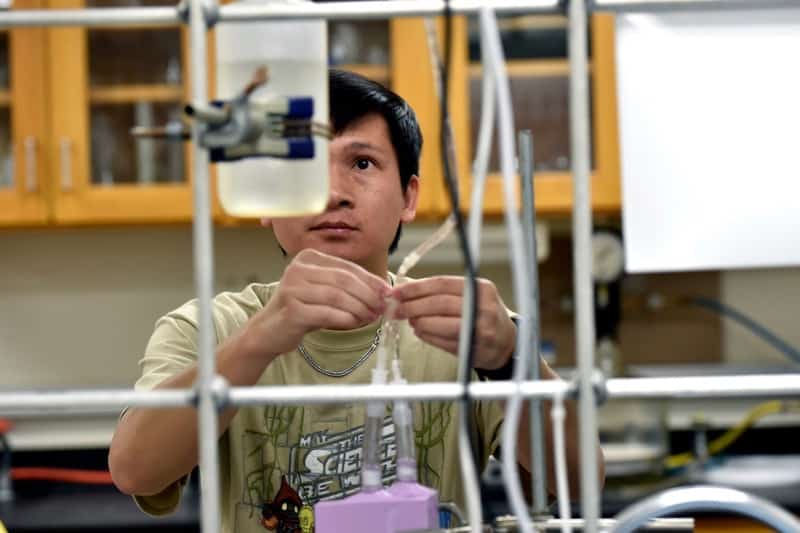
Hai Pham during an open house at the Desert Research Institute on Friday, May 3, 2019, in Las Vegas.
Photo by David Becker/Nevada Momentum
Investigating microplastic pollution in Nevada’s freshwater
Monica Arienzo, Zoe Harrold, Meghan Collins, Xuelian Bai, Julia Davidson
Microplastics, pieces of plastic debris about the size of a pencil’s eraser or smaller, come from the breakdown of products like fishing lines, synthetic clothing, and single-use plastic goods. These tiny pollutants are durable, insoluble, and potentially toxic. More and more, though, they’re ending up in our waterways, which could threaten aquatic environments and the organisms that live there.
DRI researchers Monica Arienzo, Ph.D. Zoe Harrold, Ph.D., Meghan Collins, M.S., Xuelian Bai, Ph.D., and undergraduate researcher Julia Davidson are investigating the presence of microplastics in Lake Tahoe and the Las Vegas Wash to learn more about how much microplastic exists in these waterways. Developing baseline knowledge about the extent of microplastic pollution will allow scientists to ultimately identify the sources of such pollution, the potential accumulation and negative health effects of microplastics in freshwater organisms, and ways to reduce the amount of microplastic in freshwater ecosystems.

The microplastics research team samples water from the shore of Lake Tahoe. April 2019. Credit: DRI.
Advancing technologies to improve reliability of solar energy
Eric Wilcox, Marco Giordano
Nevada enjoys many sunny days each year, but when the clouds do roll in, solar facilities experience dramatic fluctuations in power. If grid operators could anticipate when a cloud will come between the sun and solar panels, they could coordinate a smooth transition to alternative power sources and provide a steady, reliable supply of energy—but low-cost technology providing accurate, localized forecasts are not yet integrated into community solar power systems, such as residential rooftop solar.
Eric Wilcox, Ph.D., graduate student researcher Marco Giordano, and colleagues at UNR and UNLV are experimenting with sky-imaging cameras to track the movements of clouds and predict when they’ll shade solar panel arrays. With rigorous testing and refinement, Wilcox and Giordano hope that this portable tool will provide highly-localized, actionable forecasts of solar power fluctuation that will help make solar energy use more reliable and efficient.
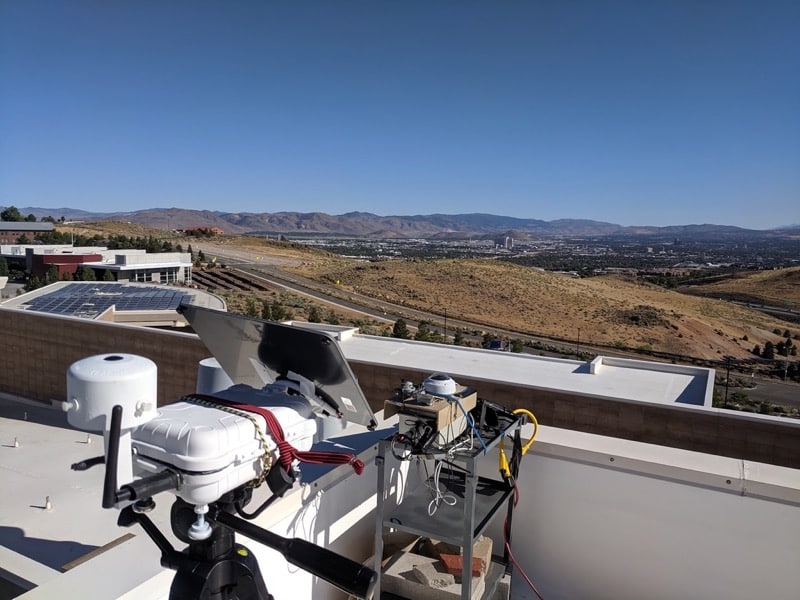
The sky-imaging camera at work on the DRI rooftop in Reno. Credit: Eric Wilcox.
Applying hydrologic sciences to make advances in tumor treatment
Rishi Parashar, Nicole Sund
To treat a tumor, doctors deliver chemotherapeutic agents and other drugs through the bloodstream to treat the cancerous cells. The tissue in solid tumors, however, is deformed, with twisted blood vessels and increased cell variability. This means that chemo traveling through the bloodstream may not be able to reach all the affected cells consistently, making the treatment ineffective.
DRI’s Rishi Parashar, Ph.D., and Nicole Sund, Ph.D., are using their expertise in hydrological modeling to better understand the movement of anti-cancer drugs through tumors. Collaborating with molecular cancer virologist, Subhash Verma, Ph.D., at University of Nevada, Reno’s School of Medicine, Parashar and Sund hope that the mathematical models they create will allow them to determine the effective concentration of drugs for treatment of solid tumors.
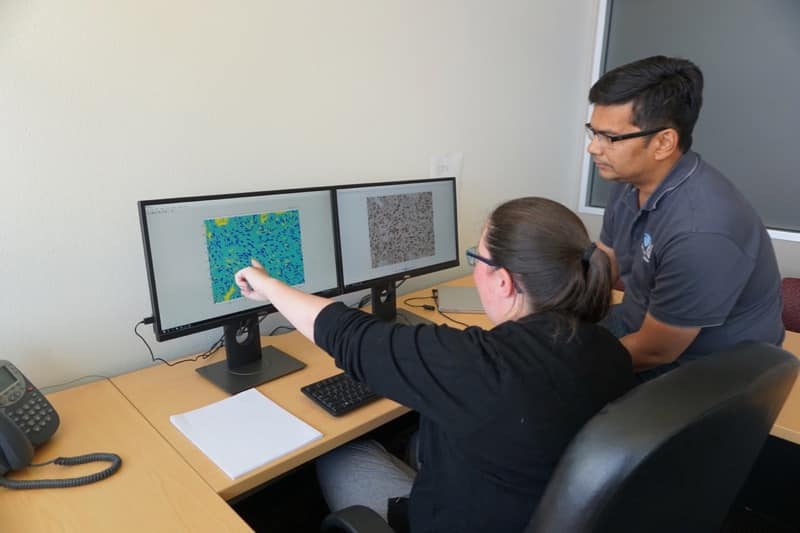
(From left) Nicole Sund and Rishi Parashar look at images of cancerous tissue on a monitor.
Designing systems to test e-cigarettes for harmful chemical emissions
Yeongkwon Son, Andrey Khylstov
The popularity of e-cigarettes has increased exponentially over the last several years, especially among young people, but there’s growing evidence that e-cigarettes emit harmful chemicals like formaldehyde. Currently, there are no efficient and cost-effective e-cigarette testing systems available to manufacturers or regulators to ensure the safety of the devices and flavored e-liquids.
DRI’s Yeongkwon Son, Ph.D., and Andrey Khlystov, Ph.D., are developing a fully automated tool to collect and analyze e-cigarette emissions, lowering the costs, time, and labor currently required of e-cigarette testing. With this innovation, Son and Khylstov hope that e-cigarette testing will become more efficient and accurate, and that the devices themselves will become safer for the public.
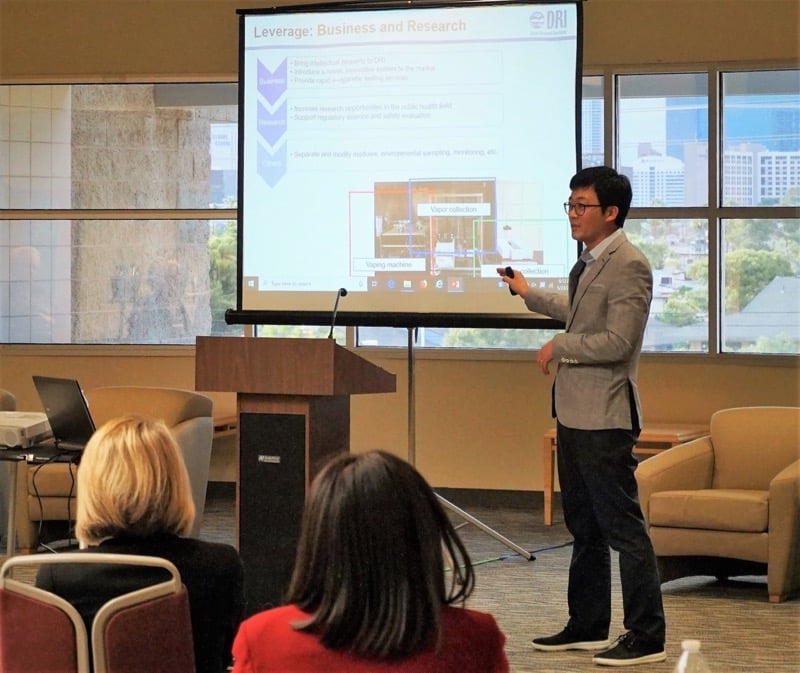
Yeongkwon Son presents his research to the DRI Foundation.
